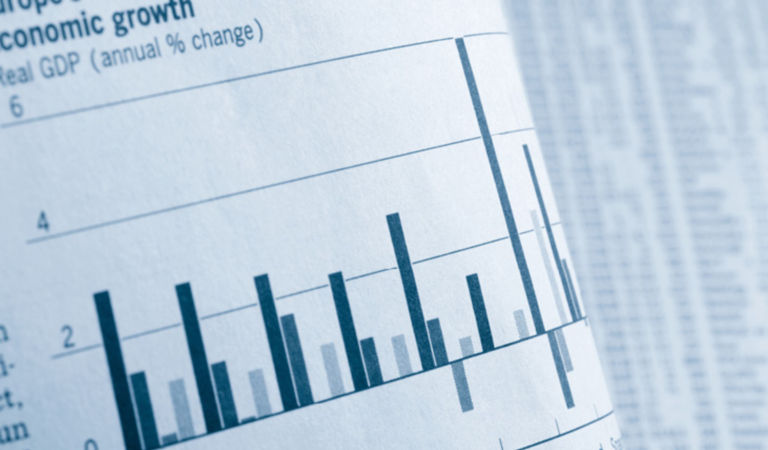Equities
Global equities (+3.4%) rose for the fifth consecutive month, ending March with a 9.6% year-to-date gain. Market performance broadened to smaller-cap companies as the MSCI ACWI Index reached record highs. Dovish signals from major central banks and AI enthusiasm provided a meaningful tailwind, even as ongoing geopolitical tensions exerted pressure on international business and trade. Global economic growth gained momentum as the J.P.Morgan Global Composite Purchasing Managers’ Index (PMI) accelerated to an eight-month high. Headline inflation in most developed markets continued to moderate despite underlying pockets of persistent price pressures at the core level that have added uncertainty about the timing and magnitude of interest-rate reductions. The US Federal Reserve (Fed), Bank of England (BOE), and European Central Bank (ECB) held interest rates unchanged and reconfirmed projections for rate cuts later this year. In a notable development, the Bank of Japan (BOJ) increased its policy rate for the first time since 2007. This decision came as the Japanese yen fell to a 30-year low, wage growth exceeded expectations, and weaker economic growth pushed the country to the brink of a recession. China’s economy showed improvements in March amid better industrial production and retail sales, while officials announced a GDP target of 5% for 2024, signaling a commitment to continued policy support in the face of local government financial fragility and a struggling property sector.
US
US equities (+3.2%) rose for the fifth consecutive month to register a substantial 10.6% year-to-date gain. The S&P 500 Index hit record highs as the rally continued to broaden beyond mega-cap technology stocks to smaller-cap stocks and cyclical sectors amid an encouraging economic outlook and anticipated interest-rate cuts. Robust stock gains generated some concerns about loftier equity valuations, with the 12-month price-to-earnings ratio of the S&P 500 Index ending the month at 20.9, above the 5- and 10-year averages of 19.1 and 17.7, respectively. Inflation remained well above the Fed’s 2.0% target, although the disinflation trend appeared intact; the core Personal Consumption Expenditures Price Index increased 2.8% from a year earlier, in line with forecasts. As expected, interest rates were left unchanged at a range of 5.25% – 5.50%, with a narrow majority of Fed officials reaffirming projections for three interest-rate reductions this year despite firmer-than-anticipated inflation in recent months. The Fed released new quarterly economic projections that revealed expectations for economic growth of 2.1% in 2024, a significant increase from the bank’s previous forecast of 1.4% in December. The Fed also foresees unemployment rising to 4.0% and inflation declining at a slower 2.6% pace by the end of 2024. US President Joe Biden and his predecessor Donald Trump clinched their parties’ nominations, setting the stage for a high-stakes rematch in November’s presidential election.
Economic data released during the month was mixed, highlighted by signs of a softening labor market that could provide more scope for the Fed to lower interest rates in the months ahead. In February, a robust 275,000 increase in nonfarm payrolls was driven by a narrow group of industries, while payroll growth in the prior two months was revised down by a sizable 167,000. The household survey continued to show a much weaker employment backdrop as the number of jobs declined by 184,000. Furthermore, average-hourly-earnings growth moderated, and the unemployment rate rose to a two-year high of 3.9%. Consumer spending remained the key support for the economy’s resilience; headline retail sales rebounded by 0.6% in February after lackluster sales in December and January were revised lower, while personal spending jumped 0.8% in February — the largest monthly gain since January 2023. The Conference Board’s Consumer Confidence Index was steady at 104.7 in March but below consensus expectations of 107.0 amid a less optimistic outlook for business conditions and the labor market. The housing market showed signs of recovery in February; building permits and housing starts rose significantly following weather-related constraints in January, and existing-home sales advanced at the fastest pace in a year as the number of listings increased. Homebuilder sentiment climbed to an eight-month high in March amid solid demand.
The manufacturing sector expanded above forecast in March after 16 straight months of contraction, with the Institute of Supply Management (ISM) Manufacturing Index ascending to 50.3, from 47.8. Stronger demand was evidenced by an expansion in new orders. Production surged and employment contracted at a softer pace. Services sector growth cooled modestly in February, with the ISM Services Index easing to 52.6. Growth in new orders reflected strong demand, and companies were mostly positive about business conditions. Notably, the employment subindex fell sharply, and materials costs rose at a much slower pace. The National Federation of Independent Businesses (NFIB) Small Business Optimism Index was historically depressed at 89.4 in February, well below its 50-year average of 98. Companies reported weaker sales and earnings, while job creation plans over the next three months fell to the lowest level since May 2020.
Within the S&P 500 Index (+3.2%), all 11 sectors posted positive results for the period. Energy (+10.6%) was the best performing sector, led by energy equipment & services (+13.3%). Utilities (+6.6%) outperformed, aided by electric utilities (+7.5%). Materials (+6.5%) rose as metals & mining (+14.3%) contributed to the sector. Financials (+4.8%) also outperformed, aided by banks (+8.5%). Information technology (+2.0%) and real estate (+1.8%) had the lowest impact on returns for the period.
Europe
European equities (+4.6%) advanced in March. The outlook for the eurozone economy brightened as the HCOB Flash Eurozone Composite PMI increased for the fifth straight month to a nine-month high of 49.9 in March, slightly below an expansionary level, indicating a small decline in the output of goods and services. A modest recovery in the services sector accompanied a softening downturn in manufacturing, and employment increased for the third month. Against this improving economic backdrop, the ECB and the central banks of Norway, Sweden, and the UK left interest rates unchanged and signaled that they would be cut in the coming months, while the central bank of Switzerland unexpectedly became the first major central bank to ease policy. Eurozone headline inflation moderated to 2.4% in March, from 2.6% in February, while core inflation fell more than expected to 2.9%, from 3.1%, bolstering expectations that the ECB will cut interest rates by the summer. The ECB announced a new operational framework, outlining plans to augment commercial bank lending and shrink its vast bond portfolio. Fourth-quarter earnings for companies in the STOXX 600 Index are forecast to decline by 6.5% from a year earlier.
Europe’s manufacturing sector downturn stabilized in March; the HCOB Eurozone Manufacturing PMI slipped modestly to a three-month low of 46.1, from 46.5 in February, although there were signs of positive momentum. Output and new orders contracted at the slowest rate in a year and remained on an upward trajectory, while factories shed jobs for the tenth successive month. Encouragingly, business confidence rose to an 11-month high, and input costs and output prices continued to fall. The HCOB Flash Eurozone Composite PMI revealed that services sector activity in March improved for a second month. New business increased for the first time in nine months, while costs climbed at the softest pace in eight months. The European Commission’s Economic Sentiment Indicator recorded a three-month high of 96.3 in March; consumer confidence continued to recover thanks to a better view of the economic situation, while industry confidence improved marginally.
In Germany (+4.0%), a combined report from five economic institutes forecast GDP growth of 0.1% in 2024, a steep downgrade from a previous projection of 1.3% amid declining exports and faltering domestic demand. Although the ZEW Indicator of Economic Sentiment in March reached its highest level since February 2022, the assessment of the current economic situation remained at a low level. The UK (+4.6%) economy returned to growth in January, with GDP rising 0.2%, driven by an expansion in the services sector. The S&P Global Flash UK PMI Composite Output Index dropped fractionally to 52.9 as manufacturing hit a 20-month high, while services dipped but remained in expansionary territory. Headline inflation fell more than forecast to 3.4% in February, strengthening the case for lower interest rates in the summer. In the Netherlands (+3.8%), the far-right Party for Freedom leader Geert Wilders has conceded that he will not become the next prime minister due to a lack of support from potential coalition partners. In Portugal (-3.3%), the Democratic Alliance leader Luís Montenegro is set to become the first center-right prime minister for more than eight years, marking another political shift to the right in the European Union (EU).
Pacific Basin
Pacific Basin equities (+3.3%) advanced. In Japan (+4.3%), the BOJ eliminated its negative interest-rate policy by raising borrowing costs for the first time since 2007, a move that marks a historic shift in the central bank’s aggressive monetary stimulus. The bank’s board voted 7-2 to lift the overnight borrowing rate to a range of 0% – 0.1%, from -0.1%. The BOJ also ended its yield curve control program and exchange-traded-fund purchase program while pledging to continue buying long-term government bonds as needed to support the transition. BOJ Governor Kazuo Ueda stated that the central bank has “judged that achieving the goal of sustainable 2% inflation has come within view.” The decision followed stronger-than-expected wage increases by Japan’s largest companies, which policymakers hope will boost household spending and generate more durable growth in the economy. The country’s largest union announced that its members reported raises averaging 5.3%, well above the 3.8% wage increases last year. Although the core Consumer Price Index (CPI) in February accelerated at the quickest pace in four months, another inflation measure that strips out the effect of fuel and that’s closely monitored by the BOJ eased to 3.2%, from 3.5%, marking the slowest annual pace of price increases for more than a year and adding uncertainty about how soon the BOJ would raise interest rates again. The yen slid to a 34-year low against the US dollar, prompting Japan’s finance minister to reiterate his commitment to intervene in the currency markets to prevent excessive fluctuations in the exchange rate. Japan avoided recession as fourth-quarter annualized GDP was revised higher to 0.4%, driven by robust business spending.
Australia’s (+2.8%) GDP slowed to 0.2% in the fourth quarter as higher interest rates and the rising cost of living curbed household spending. Excluding the pandemic period, the 1.5% annual pace of GDP growth was the lowest since 2000 and well below the 2.4% average over the last decade. The Reserve Bank of Australia (RBA) left interest rates unchanged at 4.35%; the bank removed all references to additional rate increases, but Governor Michele Bullock noted that policymakers are not confident enough to completely rule out future hikes. The CPI in February rose at a 3.4% annual pace for a third straight month, but a closely watched measure of core inflation (trimmed mean CPI) increased to 3.9%, from 3.8% in January, supporting the RBA’s decision to keep interest rates unchanged. The unemployment rate fell to 3.7% in February, from 4.1%, and the economy added 116,500 jobs, nearly three times the forecast gain. These unexpected results appeared to highlight resilience in the labor market but were also at odds with recent declines in job openings, an upward trend in the unemployment rate since October, and weak consumer spending. Nevertheless, markets dialed back expectations for an August rate cut.
In Singapore (+4.2%), the CPI accelerated to 3.4% in February from a year ago, slightly above expectations and higher than the 2.9% gain in January. Core inflation rose at the fastest pace in seven months, increasing 3.6% versus a forecast of 3.4%, driven by seasonally higher spending from the Lunar New Year. Non-oil domestic exports in February fell below estimates, while consensus projections for 2024 economic growth were boosted to 2.5%, from 2.3%. New Zealand’s (+1.3%) GDP unexpectedly contracted 0.1% in the fourth quarter, confirming a recession and increasing pressure on the central bank to cut interest rates this year.
Emerging Markets
Emerging markets (EM) equities (+3.1%) rose in March. Asia led the gains, followed by Latin America and Europe, the Middle East, and Africa (EMEA).
In Asia (+3.8%), China (+1.1%) modestly increased, with Premier Li Qiang declaring an economic growth target of around 5% in 2024 and stating that the government would issue one trillion yuan (US$139 billion) in long-term bonds to help bridge funding gaps, assist local governments, and support advanced technology and education. A protracted slump in the property sector remained a hefty drag on the economy and sentiment among policymakers, consumers, and investors, although some key economic data for the January – February period offered some encouragement. Industrial output rose 7.0%, marking the best growth in almost two years and exceeding estimates of 5%; retail sales grew 5.5%, besting a forecast of 5.2%; fixed asset investment rose 4.2%, above expectations of 3.2%; and exports and imports grew in excess of projections. Additionally, consumer inflation turned positive for the first time in six months, supported by the Lunar New Year holiday. Taiwan (+9.3%) was propelled higher by an increase in semiconductor stocks on the back of continued interest in AI developments. In South Korea (+6.4%), robust demand for semiconductor chips helped exports to grow for the sixth straight month in March, but consumer sentiment dropped sharply amid concerns of higher produce prices and reaccelerating inflation. India (+1.4%) advanced for the fifth straight month, with Moody’s sharply raising its GDP forecast for 2024 to 6.8%, from 6.1%, citing strong economic momentum, notably manufacturing and construction activity along with robust goods and services tax collections and consumer optimism.
In Latin America (+0.8%), Mexico’s (+2.7%) central bank lowered the benchmark interest rate by 25 basis points (bps) to 11.00% — the first rate cut since the tightening cycle began in 2021. The bank expects inflation to converge to its 3% target by the second quarter of 2025. Brazil’s (-1.1%) central bank lowered policy rates for the sixth consecutive time, by 50 bps to 10.75%, setting expectations for another rate cut in May but signaling uncertainty about further cuts after that. Chile’s (+3.6%) GDP accelerated modestly in the fourth quarter, while unemployment held steady at 8.5%. The central bank is expected to slow its pace of interest-rate cuts to 75 bps at its April meeting as the country’s economy gains momentum.
In EMEA (+0.5%), the United Arab Emirates (UAE) (+1.7%) was reportedly pushing for a bilateral trade pact with the EU amid long-stalled trade negotiations between the EU and the Gulf Cooperation Council, an Arab bloc that includes the UAE and Saudi Arabia. South Africa’s (+3.5%) headline inflation rose 5.6% annually in February, approaching the upper bound of the central bank’s target range. Interest rates were left unchanged as policymakers cited elevated inflation concerns, which pushed expectations of a rate cut to the third quarter of this year. Saudi Arabia (-1.0%) reported that non-oil revenues hit 50% of the Kingdom’s GDP in 2023 — the highest level ever — while inflation rose to 1.8% annually in February, from 1.6%, due to an increase in housing rents.
Fixed Income
A backdrop of lingering inflation shone the spotlight on major central banks’ policy considerations. Credit sectors stabilized, benefiting from resilient economic data, and outperformed duration-equivalent government bonds.
US economic data was mixed, underscored by the adverse impact of persistent cost pressures on consumer confidence and the NFIB Small Business Optimism Index. Consumer goods and gasoline purchases boosted headline retail sales, and higher consumer prices across most categories lifted headline inflation. Even as nonfarm payrolls advanced above estimates, the labor market softened, with an uptick in unemployment. Improvements in manufacturing employment and supply chains supported manufacturing PMI growth, while business spending on equipment increased durable goods orders. Housing starts picked up as a lack of inventory drove single-family home construction. Pending home sales rose, while new-home sales declined despite median new-home prices dropping to the lowest level in over two years. The eurozone HCOB Manufacturing PMI declined, and industrial production fell on lower capital goods output. Germany’s ifo Business Climate Index strengthened on an improved economic outlook. The UK’s price pressures eased as annual headline and core inflation slowed. China’s industrial production grew more than expected driven by an expansion in high-tech manufacturing. Japan’s industrial production experienced the sharpest drop in over three years, while the Producer Price Index rose above estimates. Canada’s multi-unit housing starts accelerated, and building permits advanced on plans for residential and nonresidential construction. Australians grew more pessimistic about their finances and cost of living, and annual retail sales growth remained low.
Most major central banks held interest rates steady while laying the groundwork for easing later in the year. The Swiss National Bank (SNB) cut its policy rate in a surprise move, the first major central bank to dial back monetary policy. The BOJ raised short-term interest rates, ending the only remaining negative-rate regime.
Most global sovereign bond yields fell, driven by expectations that moderating inflation will allow the Fed and other central banks to cut interest rates this year. US Treasury yields fell as Fed Chair Jerome Powell signaled increased confidence in the conditions that warrant rate cuts. Eurozone yields also moved lower, particularly German bunds, driven by a significant downside surprise in consumer spending. The gilt yield curve steepened as the BOE grew more dovish amid weak economic growth and as the government planned to ramp up bond issuance. Despite the BOJ’s first rate hike in 17 years, Japanese government bonds were relatively unchanged as policymakers balanced risks. In EM, South African bonds sold off meaningfully as the country continued to grapple with deteriorating growth and a public debt burden, despite ongoing policy responses. The Bloomberg TIPS Index delivered a total return of 0.82%, and the 10-year breakeven inflation rate remained unchanged at 2.32% during the month.
Global credit outperformed duration-equivalent government bonds as spreads tightened. Within the securitized sectors, agency mortgage-backed, commercial mortgage-backed, and asset-backed securities outperformed duration-equivalent government bonds. Within EM, local markets debt (-0.03%) underperformed external debt (2.09%), in US-dollar terms. Spread narrowing contributed positively to external debt performance, and a decrease in US Treasury yields also helped results. Appreciation in EM currencies benefited results within local markets, while movement in EM rates had a negative impact.
Currencies
The US dollar appreciated versus most major currencies on the back of continued strength in the US economy, sticky inflation, and the Fed’s patient approach to rate cuts. Among the G10, high-beta currencies (Swedish krona, Norwegian krone) led the losses. The Swiss franc weakened after the SNB unexpectedly lowered interest rates. The New Zealand dollar declined amid softer economic readings and moderating inflation. The Japanese yen continued to slide against the US dollar despite the BOJ’s rate hike. In EM, the Mexican peso, Colombian peso, and South African rand strengthened against the US dollar. The Mexican peso reached a nine-year high, driven by a combination of high interest rates, low volatility, and ample liquidity. The South African rand rose after the government unexpectedly recorded a budget surplus in February.
Commodities
Commodities (+4.7%) rose in March as all four sectors posted positive results.
Energy (+5.7%) rose for the third month in a row as OPEC+ agreed to extend output cuts to the end of June, potentially tightening the oil market and drawing down stockpiles. Ukraine’s drone strikes against Russian oil refineries along with Russia’s pledge for deeper output cuts also helped to buoy crude oil (+7.4%), gas oil (+2.7%), and heating oil (+1.1%) prices. Gasoline (+6.2%) was lifted by higher demand for travel amid warmer weather and as refineries shifted to a more expensive and a less-polluting blend of summer fuel. US natural gas (-5.4%) continued to fall as no material near-term weather events were expected and inventories were tracking well above the five-year seasonal average.
Industrial metals (+3.1%) ended higher. Aluminum (+4.9%) rose, with the market factoring in stronger seasonal demand, although elevated inventory levels in China may act as a supply-side cushion. Copper (+4.4%) climbed as Chinese smelters moved closer to implementing output cuts due to a raw materials shortage and underperforming plants. Zinc (+0.4%) ended modestly higher due to tighter supply and a brighter demand outlook in China. Lead (-0.5%) was pressured by reports that inventories surged to an 11-year high following record deliveries to London Metals Exchange warehouses in Singapore and South Korea. Nickel (-6.4%) prices dropped as disappointing Chinese manufacturing data weighed on sentiment.
Precious metals (+8.4%) advanced. Silver (+9.3%) and gold (+8.3%) rallied on the Fed’s reiterated forecast for three rate cuts in 2024. Heightened concerns over conflicts in the Middle East and Ukraine further fueled the demand for the perceived safe-haven metals.
Agriculture & livestock (+2.4%) ended higher. Cocoa (+62.1%) skyrocketed as top growers in the Côte d’Ivoire and Ghana faced catastrophic harvest loss due to impacts of illegal gold mining, climate change, sector mismanagement, and rapidly spreading disease. Soybeans (+4.9%) were boosted by the World Agricultural Supply and Demand Estimates report that showed a big increase in Chinese import volumes. Sugar (+4.3%) ended higher as Brazilian mills in the Centro-Sul sugar region were projected to produce 4.8% less sugar in the new season that started in April. Corn (+3.3%) rose after a United States Department of Agriculture (USDA) report revealed lower year-over-year planted acreage. Coffee (+2.9%) advanced on supply concerns within key growth regions. Live cattle (-0.1%) and feeder cattle (-2.5%) prices fell as the USDA raised its projection for cow slaughter in the first half of 2024. Lean hogs (-2.2%) ended lower due to weak Chinese imports amid lackluster demand and domestic oversupply within the country. Wheat (-1.7%) slipped due to ample supply from Russia, and cotton (-7.9%) moved lower due to a noticeable slowdown in manufactured product sales in the Brazilian cotton market.




























Monthly Market Review — October 2025
A monthly update on equity, fixed income, currency, and commodity markets.
By